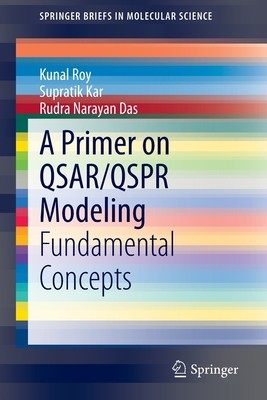
- We will send in 10–14 business days.
- SAVE -10% with code: EXTRA
Reviews
Description
This brief goes back to basics and describes the Quantitative structure-activity/property relationships (QSARs/QSPRs) that represent predictive models derived from the application of statistical tools correlating biological activity (including therapeutic and toxic) and properties of chemicals (drugs/toxicants/environmental pollutants) with descriptors representative of molecular structure and/or properties. It explains how the sub-discipline of Cheminformatics is used for many applications such as risk assessment, toxicity prediction, property prediction and regulatory decisions apart from drug discovery and lead optimization. The authors also present, in basic terms, how QSARs and related chemometric tools are extensively involved in medicinal chemistry, environmental chemistry and agricultural chemistry for ranking of potential compounds and prioritizing experiments. At present, there is no standard or introductory publication available that introduces this important topic to students of chemistry and pharmacy. With this in mind, the authors have carefully compiled this brief in order to provide a thorough and painless introduction to the fundamental concepts of QSAR/QSPR modelling. The brief is aimed at novice readers.
EXTRA 10 % discount with code: EXTRA
The promotion ends in 17d.18:28:44
The discount code is valid when purchasing from 10 €. Discounts do not stack.
- Author: Kunal Roy
- Publisher: Springer
- Year: 2015
- Pages: 121
- ISBN-10: 3319172808
- ISBN-13: 9783319172804
- Format: 15.6 x 23.4 x 0.7 cm, softcover
- Language: English English
This brief goes back to basics and describes the Quantitative structure-activity/property relationships (QSARs/QSPRs) that represent predictive models derived from the application of statistical tools correlating biological activity (including therapeutic and toxic) and properties of chemicals (drugs/toxicants/environmental pollutants) with descriptors representative of molecular structure and/or properties. It explains how the sub-discipline of Cheminformatics is used for many applications such as risk assessment, toxicity prediction, property prediction and regulatory decisions apart from drug discovery and lead optimization. The authors also present, in basic terms, how QSARs and related chemometric tools are extensively involved in medicinal chemistry, environmental chemistry and agricultural chemistry for ranking of potential compounds and prioritizing experiments. At present, there is no standard or introductory publication available that introduces this important topic to students of chemistry and pharmacy. With this in mind, the authors have carefully compiled this brief in order to provide a thorough and painless introduction to the fundamental concepts of QSAR/QSPR modelling. The brief is aimed at novice readers.


Reviews